BY ON

The Ajanta Caves are located about 100km north east of Aurangabad, it takes about two hours to drive there from the city. If possible try to arrive early (for 9am) so you stand the best chance of enjoying them with the minimum of fellow visitors. The caves are very popular with school parties who seem to start arriving by 10am.
Upon arrival and having parked your car it’s a short walk via the obligatory souvenir stalls to a bus pickup/dropoff point that takes you on a short 10 minute ride to the caves themselves.
All the caves are man-made, and are located along a horse-shoe bend of cliffs high above a stream known as the Waghora. It’s an amazingly peaceful setting (if you get there early enough!), one can appreciate why this was chosen as a location by the Buddhist monks.
If the effort to create such structures is not a wonder in itself, the true glory of Ajanta lies within them. Many of the caves are heavily decorated with murals, mostly depicting scenes from various Jataka stories, different incidents associated with the life of Buddha, as well as contemporary events and social life.
It’s staggering to imagine how these caves must have looked in their heyday. Although what we’re left with now after the passage of time and man’s intervention (both honourable in intent and unfortunately the result of souvenir hunters) remains remarkable.
Not only are the walls richly adorned with scenes, the ceiling decoration also invariably consists of decorative patterns, both geometrical as well as floral. The paintings are considered the finest surviving examples of Indian art to be found anywhere.

Directly below a row of Buddhas, on the lintel of the doorway, is a row of eight Mithunas, or loving couples (Cave 2)
It’s believed the caves were excavated during two distinct periods from 2nd century B.C to 6th century A.D, and in total there are 30 caves hewn from the natural rock, although not all of them were completed.
Whilst the caves are famous for their ancient murals, the sculptures are equally breathtaking. It’s all too easy to forget that these were actually carved out of the solid rock of the cliff face, and the level of planning and organisation involved to achieve this is, in my option, only surpassed by Ellora Caves which is just 2 hours away from Ajanta (and can be combined on a weekend trip).
The caves were discovered in 1819 by Army Officer John Smith of the Madras Regiment of the British Army during one of his hunting expeditions. Separated from his party following the attack of a tiger, he fled into deep mountain jungle and came across a rock wall of a curious shape covered with a thicket which caught his eye. Getting close to it, he found that it was a horseshoe shaped window excavated in to the rock with minute carvings as ornamentation.

The hunter kneels before Bodhisattva Shaddanta, who is removing his tusks and handing them over (Cave 17)
If you’re hoping to photograph any of the murals, note that the use of a tripod or flash is banned, and the guards work tirelessly to ensure that is enforced. You can bring a flashlight however, which may increase your chances of a decent hand-held shot.
The original artists of Ajanta used a simple palette consisting of just five colours; white derived from lime, kaolin and gypsum; red and yellow obtained from ochre sourced from the nearby hills; black from soot; and green extracted from the mineral glauconite. It is believed the painters of these caves belonged to professional guilds, and would have applied their trade in the temples of other religions as well as palaces.
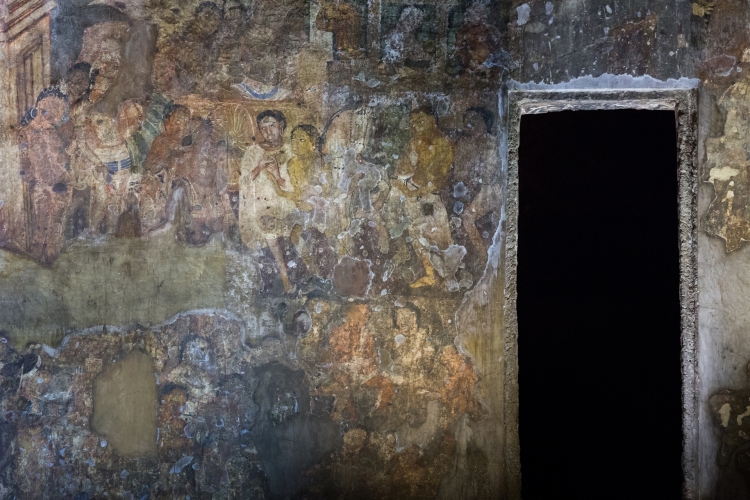
One of the masterpieces of Ajanta. In the center of this scene are two men looking compassionately towards the prince and princess as they depart from the city, having been banished, giving away all that they posess (Cave 17)
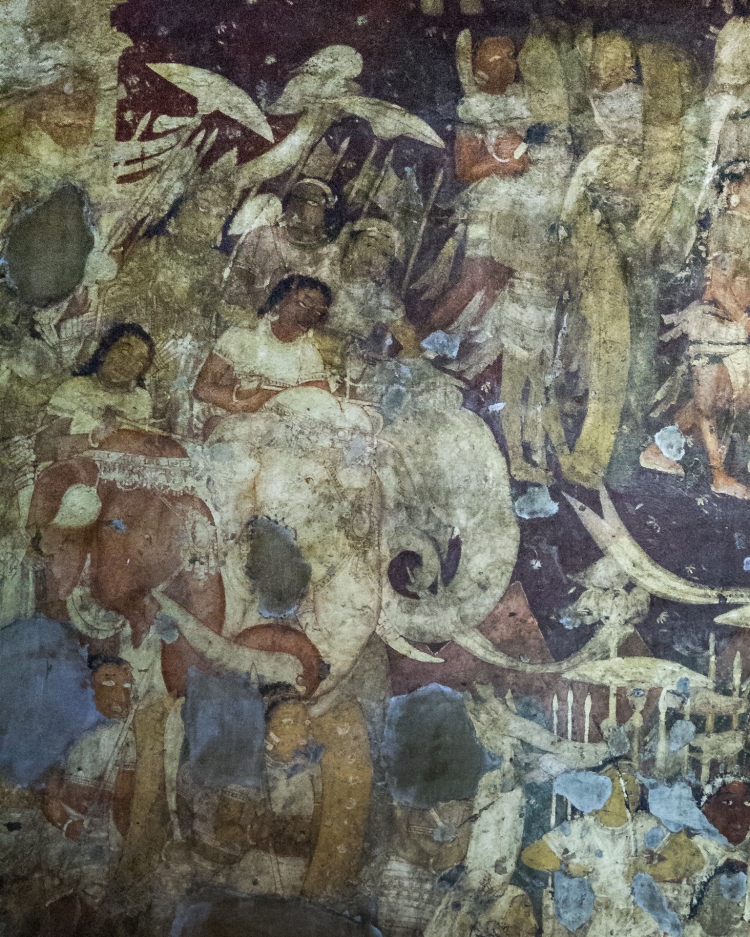
A great and powerful army assembled under Simhala’s command head towards the island of the ogresses. The crowned Simhala, who is king of Simhakalpa, is seated on a white elephant. The animals have been portrayed with realistic detail (Cave 17)
A small bean bag could be useful for photography as well, as some of the caves have a wooden barrier set back from the cave walls where you can rest the camera. Apart from that, it’s a case of racking up the ISO, a low aperature setting, and hoping you can get ~1/40th second shots that might be free of camera shake. I also found having the camera set to burst mode helped, often out of five consecutive shots the middle 2nd or 3rd were more acceptable. Just taking single shots invariably led to me immediately pressing the delete button.
If you want to learn more about the caves, and specifically the scenes depicted by the murals, I can highly recommend this book.
Ajanta Caves are open 9am – 5pm, closed on Mondays.
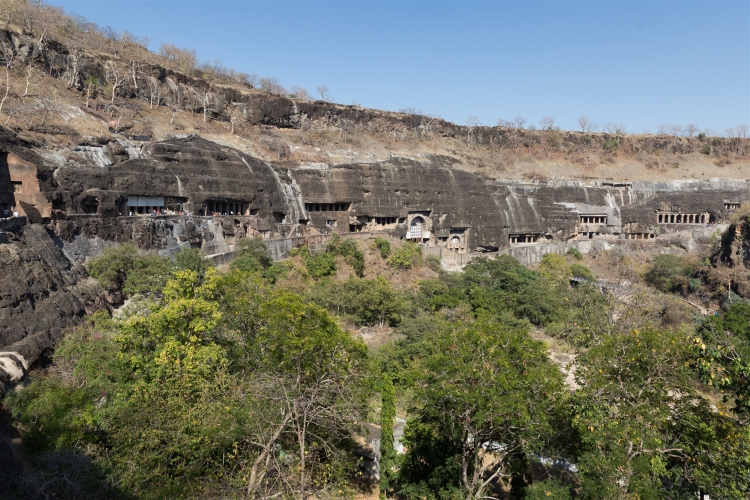






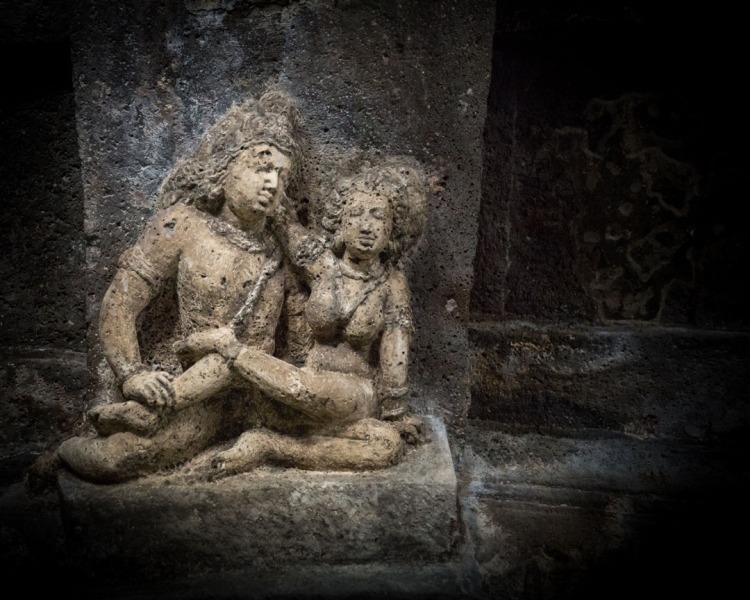

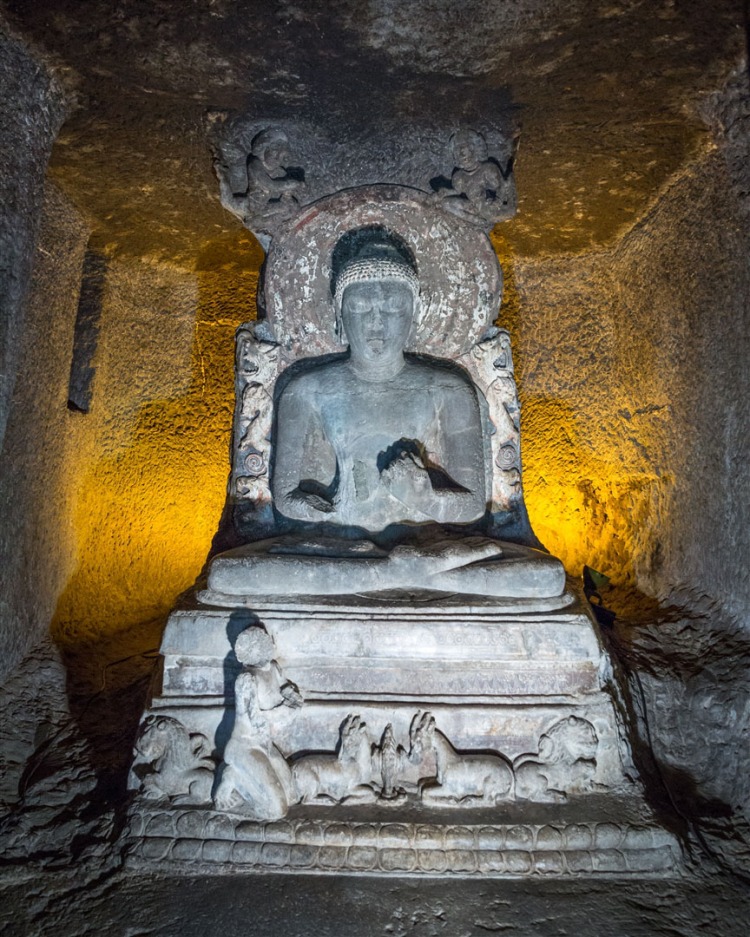
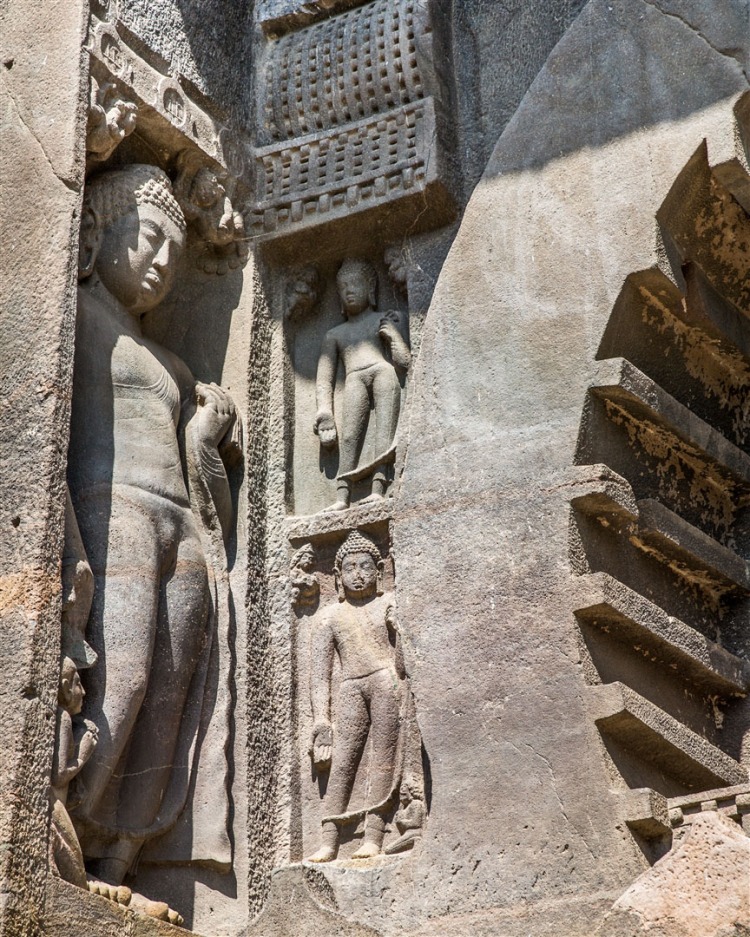



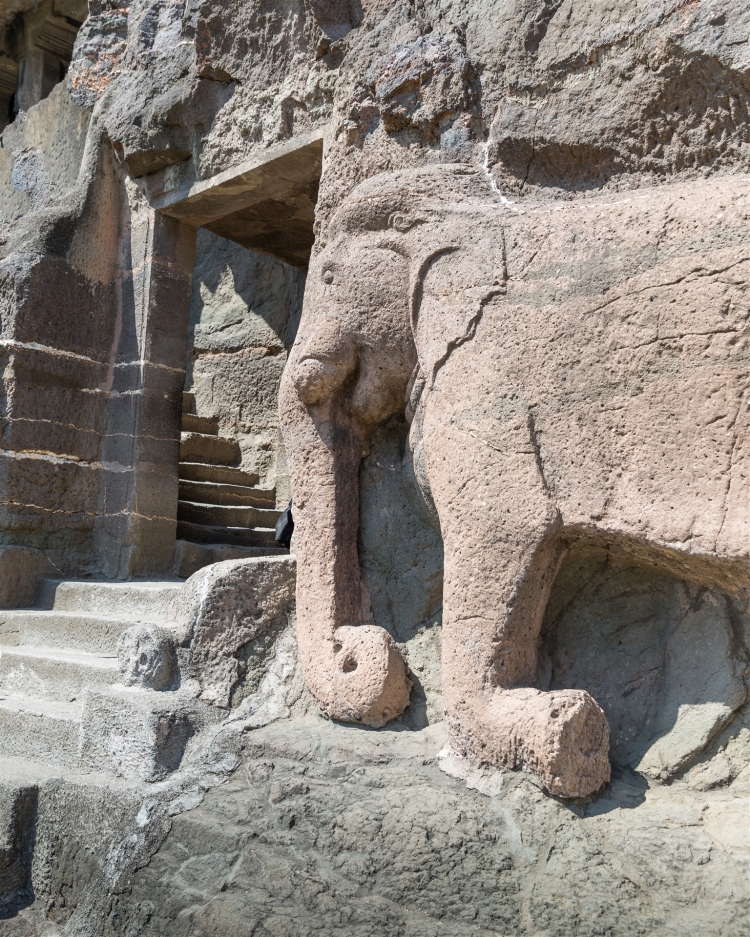





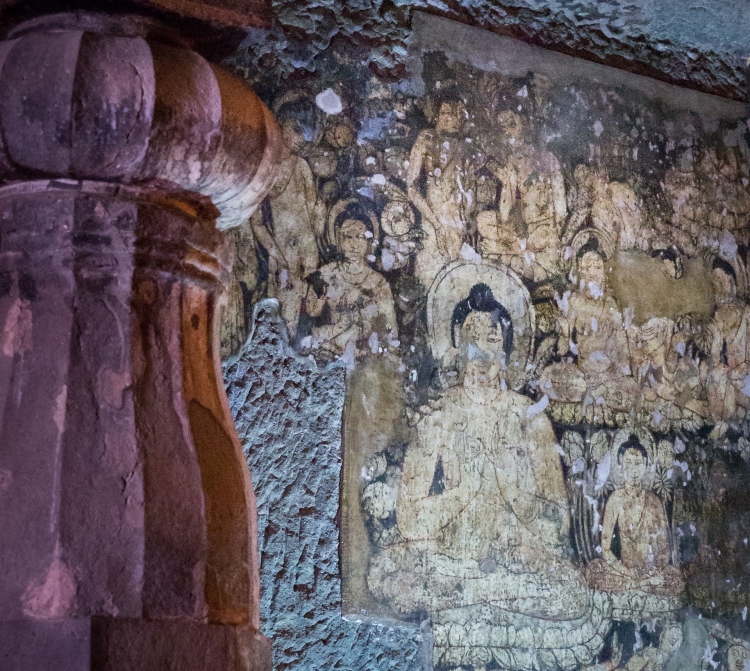
No comments:
Post a Comment